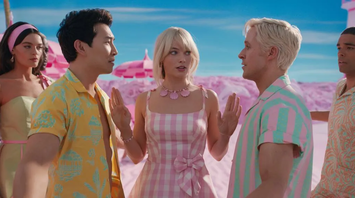
Physical beauty is a big part of what we find attractive in the opposite sex. The degree to which beauty determines how attracted we are does differ by sex. Whereas men are heavily attracted to youth and beauty in women, women are attracted to a wider range of characteristics that includes physical appearance, but also power and status, confidence and charisma, and resources like money.
In fact, one reason youth is such a big factor in women’s attractiveness is because it is so heavily driven by physical appearance. We universally believe that both men and women are better looking when younger than older. The difference is that as men age, they can offset their declining looks by accruing power, money, etc.
Nevertheless, physical appearance plays an important role in how both men and women see the opposite sex.
Beauty seems to be in innate and ineffable quality. And we seem to be able to recognize it easily. Studies show that there is very widespread agreement about which people are attractive.
At the same time, there seems to be a trend online of assuming that beauty is completely objective and largely innate. This seems in line with the general post-Christian trend of viewing human characteristics as dominated by genetic factors. People in the manosphere would likely say that while there’s a lot a beautiful woman can do to make herself ugly, there’s not much beyond surgery that can improve over baseline beauty.
This is a big over-simplification. There are four major factors that determine what we find beautiful, only one of which is linked to genes. I will briefly discuss each of these determinants of beauty.
Beauty Is Biologically Determined
This is a sense in which biology or genetics does determine what we find beautiful. This would account for why we find younger faces more attractive than older ones. To put it in the evopsych terms that are popular these days, youth indicates fertility, so we are drawn to that in order to achieve reproductive success.
But one need not posit an evopsych rationale to see that there are certain physical factors are that are judged more attractive than others. For example, we view facial symmetry as more attractive. Women with a waist-to-hip ratio of 0.7 are viewed as most attractive. And men find smaller feet in women more attract than larger ones. See this NIH study for more of these correlates for both sexes.
So there is something of a genetic or biological basis to beauty. We are hardwired to prefer symmetrical faces and such.
Beauty Is Culturally Determined
But the idea of beauty as purely biological is very oversold. It’s quite obvious that what we find beautiful is also heavily culturally conditioned.
The easiest way to see this is in styles. I look back at photos from the 1980s and think to myself, we thought this looked good? It’s similar with the 70s and many other historic eras too.
Read the rest of this piece at Aaron Renn Substack.
Aaron M. Renn is an opinion-leading urban analyst, consultant, speaker and writer on a mission to help America's cities and people thrive and find real success in the 21st century. He focuses on urban, economic development and infrastructure policy in the greater American Midwest. He also regularly contributes to and is cited by national and global media outlets, and his work has appeared in many publications, including the The Guardian, The New York Times and The Washington Post.
Photo: screenshot from movie trailer (Warner Bros.) courtesy Aaron Renn Substack.












